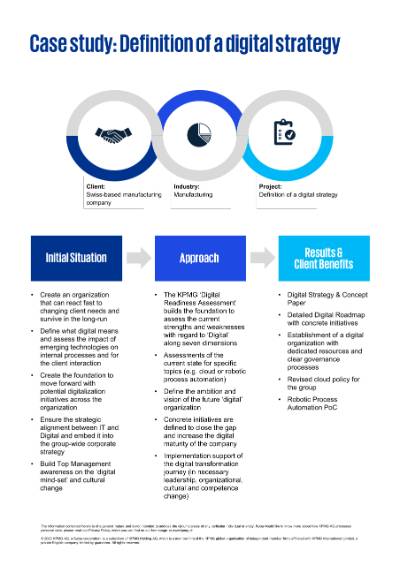Unser KPMG Digital Transformation Team unterstützt Kunden im gesamten IT-Lebenszyklus von der Strategieerstellung über die Technologie- und Lieferantenauswahl, den IT-Vertragsprozess, die Gestaltung von neuen IT-Organisationen bis hin zur Technologieimplementierung.
KPMG verfügt über praxisbasierte Expertise und Erfahrung für kleine, mittelständische und grosse Organisationen in den verschiedensten Sektoren und Branchen. Die Hauptziele unserer Services sind, den strategischen Wert von IT-Investitionen in der heutigen dynamischen Technologieumgebung zu verbessern, die Chancen der digitalen Transformation zu nutzen und bestehende oder neue Geschäftsmodelle zu erschliessen.
Wie wir Sie unterstützen
Um unsere Kunden optimal zu unterstützen kombiniert KPMG digitale / IT-Expertise mit spezifischem Sektorwissen (bspw. Life Science, Industrie, NGO) und starkem methodischem Wissen (bspw. Frameworks, Prozesse, Templates). Wir arbeiten eng mit unseren Kunden zusammen und gehen dabei iterativ und agil vor.
Unsere Expertise
Credentials
Ihre Ansprechpartner
Lernen Sie das Team kennen
Erfahren Sie mehr über unsere Mitarbeitenden und deren Tätigkeiten.








